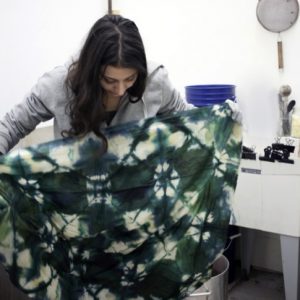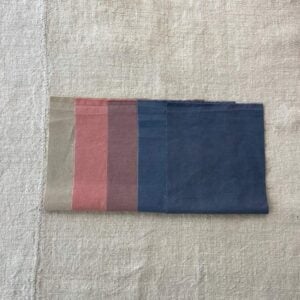Introducing…Botanical Colors Indigo and Alabama Chanin!
We’ve been waiting to tell you all about our collaborative project with Natalie Chanin of Alabama Chanin and so welcome you to the world of blue! Ecouterre writes: “Alabama Chanin is back in blue. After a nearly two-year hiatus, the Florence, Ala.-based apparel label is reintroducing its popular indigo collection, including pieces dyed for the first time on location at the sprawling design and production space it calls “The Factory.” Manufactured locally from 100 percent organic cotton, the revamped range incorporates a mix of basic accessories, classic styles, and hand-embellished one-of-a-kind designs, along with overdyed offerings from A. Chanin, its … Read more










